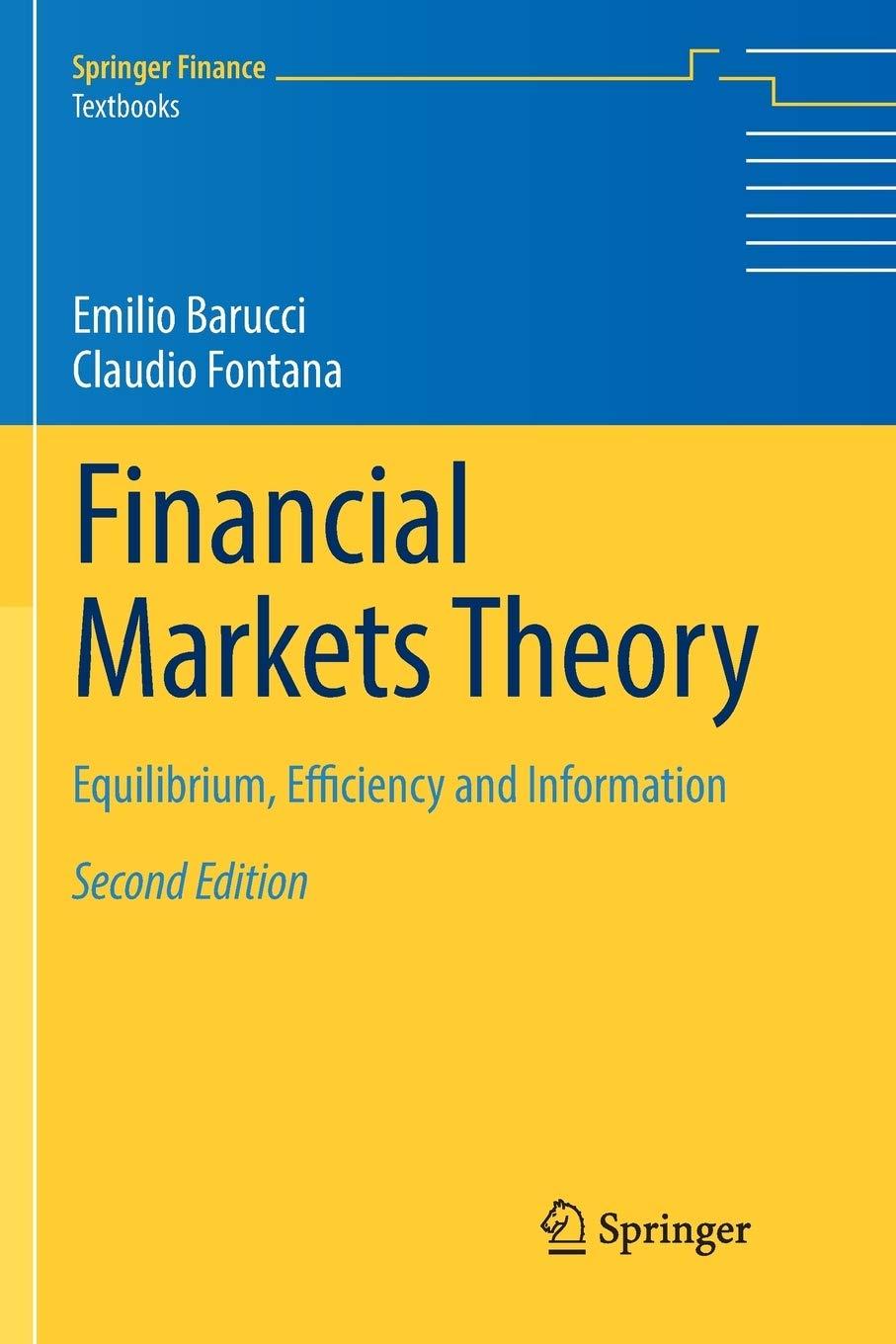Consider the habit preferences introduced in (9.43)-(9.44). In this exercise, following the original paper Abel [4], we
Question:
Consider the habit preferences introduced in (9.43)-(9.44). In this exercise, following the original paper Abel [4], we derive the Euler conditions and the equilibrium price-dividend ratio of a risky asset.
(i) For a consumption process \(c=\left(c_{t}\right)_{t=0,1, \ldots, T}\), let us denote
\[U(c)=\sum_{t=0}^{T} \delta^{t} u\left(c_{t}, z_{t}\right)\]
As a first step, show that, for all \(t=0,1, \ldots, T-1\), it holds that
\[\begin{equation*}\frac{\partial}{\partial c_{t}} U(c)=\delta^{t}\left(1-\delta \gamma\beta\left(\frac{c_{t+1}}{c_{t}}\right)^{1-\alpha}\left(\frac{z_{t}}{z_{t+1}}\right)^{1\alpha}\right)\left(\frac{c_{t}}{z_{t}}\right)^{1-\alpha} \frac{1}{c_{t}} \tag{9.87}\end{equation*}\]
(ii) Let the process \(\left(d_{t}\right)_{t=0,1, \ldots, T}\) represent the total amount of consumption good per capita delivered by the capital stock (dividend). Assume that, in equilibrium, all dividend is consumed as soon as it is delivered. If we furthermore assume that all the agents of the economy are identical, this implies that \(c_{t}^{*}=\bar{c}_{t}=d_{t}\), for all \(t=0,1, \ldots, T\), so that
\[\frac{c_{t+1}^{*}}{c_{t}^{*}}=\frac{\bar{c}_{t+1}}{\bar{c}_{t}}=\frac{d_{t+1}}{d_{t}}=:x_{t+1}\]
where the process \(\left(x_{t}\right)_{t=1, \ldots, T}\) represents the growth rate of the dividend. Rewrite (9.87) as follows:\\begin{equation*}\frac{\partial}{\partial c_{t}} U\left(c^{*}\right)=\delta^{t}\left(1-\delta \gamma \beta x_{t+1}^{1-\alpha} x_{t}^{-\gamma(1-\alpha)}\right) z_{t}^{\alpha-1}\left(c_{t}^{*}\right)^{-\alpha} \tag{9.88}\end{equation*}\]
and deduce that the following Euler condition holds:
\[\delta \mathbb{E}\left[\left.\frac{1-\delta \gamma \beta x_{t+2}^{1-\alpha} x_{t+1}^{-\gamma(1-\alpha)}}{1-\mathbb{E}\left[\delta \gamma \beta x_{t+1}^{1-\alpha} x_{t}^{-\gamma(1-\alpha)} \mid \mathscr{F}_{t}\right]} x_{t}^{\gamma(\alpha-1)} x_{t+1}^{-\alpha} r_{t+1} \rightvert\, \mathscr{F}_{t}\right]=1,\]
for all \(t=0,1, \ldots, T-1\) and \(n=1, \ldots, N\), where \(\left(r_{t}\right)_{t=1, \ldots, T}\) is the return process of the stock.
(iii) Let the process \(\left(p_{t}^{*}\right)_{t=0,1, \ldots, T}\) denote the equilibrium price process of the stock. Show that the equilibrium price dividend ratio process \(\left(p_{t}^{*} / d_{t}\right)_{t=0,1, \ldots, T}\) satisfies \[
\frac{p_{t}^{*}}{d_{t}}=\delta \mathbb{E}\left[\left.\frac{1-\delta \gamma \beta x_{t+2}^{1-\alpha} x_{t+1}^{-\gamma(1-\alpha)}}{1-\mathbb{E}\left[\delta \gamma \beta x_{t+1}^{1-\alpha} x_{t}^{-\gamma(1-\alpha)} \mid \mathscr{F}_{t}\right]} x_{t}^{\gamma(\alpha-1)} x_{t+1}^{-\alpha}\left(1+\frac{p_{t+1}^{*}}{d_{t+1}}\right) x_{t+1} \rightvert\, mathscr{F}_{t}\right], \]for all \(t=0,1, \ldots, T-1\).
Step by Step Answer:

Financial Markets Theory Equilibrium Efficiency And Information
ISBN: 9781447174042
2nd Edition
Authors: Emilio Barucci, Claudio Fontana





